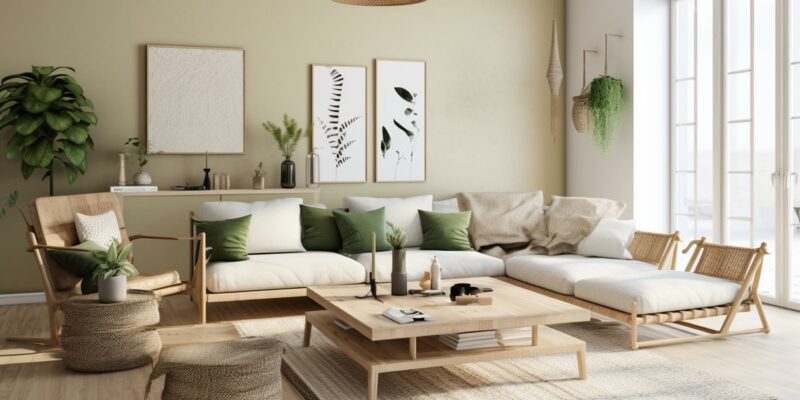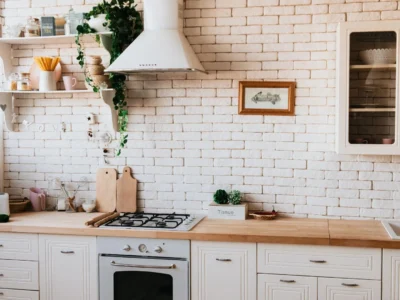As the world steadily recognizes the urgent need for sustainable living, the concept has extended beyond environmental advocacy and into our homes. Adopting eco-friendly habits doesn’t merely involve recycling or reducing water consumption; it also encompasses how we design and use our living spaces. For one, your living room can become a testament to sustainable living.
Here are some practical strategies for incorporating sustainability into your living room.
Choose Eco-Friendly Living Room Furniture
Embarking on the path of sustainability in your living room starts with conscious decisions about your furniture. Eco-friendly living room furniture reduces your environmental impact and enhances your space’s overall aesthetic. Selecting pieces embodying environmental responsibility from creation to finish is essential.
Here are a few tips for choosing sustainable living room furniture:
- Seek out sustainable wood furniture certified by trustworthy organizations like the Forest Stewardship Council (FSC).
- Consider furniture constructed from recycled or reclaimed materials. This approach reduces waste and adds a unique history to your pieces.
- Look into furniture made from rapidly renewable resources, such as bamboo or rattan, as they have a lower environmental impact.
- Consider purchasing your living room furniture from reputable retailers prioritizing sustainability, such as Dreamo Living and similar furniture shops. They offer a wide range of eco-friendly furniture options that don’t compromise style or comfort.
By following these tips, you’re investing in a healthier home and a brighter future for the planet.
Introduce Indoor Plants
Adding a touch of greenery to your living room with indoor plants serves a dual purpose. Beyond their aesthetic value, plants act as natural air purifiers, absorbing carbon dioxide and releasing oxygen, enhancing the air quality in your home.
Here are a few tips to effectively incorporate indoor plants into your living room:
- Opt for indoor plants requiring low maintenance, such as snake plants, spider plants, or rubber trees. They’re ideal for those not naturally inclined to gardening.
- Understand your room’s light levels before selecting plants. Some thrive in bright light, others in low light conditions.
- Rotate your plants occasionally to ensure all sides receive equal light for balanced growth.
- Water your plants as needed. Overwatering is a common cause of indoor plant death.
Including indoor plants in your living room spruces up the space and contributes to a healthier and more sustainable environment within your home.
Opt for Energy-Efficient Lighting
Switching your living room’s lighting to more energy-efficient options can significantly reduce environmental impact. Energy-efficient lighting not only lasts longer than traditional bulbs, but it also consumes less energy, saving you money over time.
Here are some tips to maximize energy efficiency in your living room lighting:
- Replace traditional bulbs with LED lights. They’re more efficient and have a longer lifespan.
- Utilize natural light as much as possible. Arrange your furniture to take advantage of sunlight during the day.
- Consider installing dimmer switches. They allow you to adjust the light level, using only as much energy as needed.
- Choose lamps and fixtures that are Energy Star rated. This certification ensures they meet strict energy efficiency guidelines.
By opting for energy-efficient lighting, you’re brightening your living room while taking a significant step toward sustainability.
Incorporate Eco-Friendly Décor
Incorporating eco-friendly decor into your living room design is a creative and exciting way to demonstrate your commitment to sustainability. Choosing decor pieces made from recycled, natural, or sustainable materials contributes to waste reduction and adds a unique charm to your space.
Consider these tips when shopping for eco-friendly decor:
- Seek out decors made from recycled materials, like glass vases or metal sculptures. They’re not only stylish but also reduce waste.
- Opt for textiles made from sustainable or organic materials, like cotton throws or rugs made from natural fibers.
- Explore thrift stores or flea markets for unique items that add character to your space while promoting reuse.
- Repurpose items you already have. An old ladder can become a unique bookshelf, or an antique jug can be a stylish vase.
By incorporating eco-friendly decor into your living room, you’re not just decorating; you’re making a statement about your values and commitment to a healthier planet.
Reduce Energy Consumption
Committing to reduced energy consumption in your living room can have a significant impact on both your environmental footprint and your energy bill. This involves choosing energy-efficient appliances and adopting habits that save energy.
Here are some tips to help reduce energy consumption in your living room:
- Turn off lights and electronics when they’re not in use. Consider using power strips with switches to make this easier.
- Opt for energy-efficient appliances. Look for the ENERGY STAR label when purchasing new electronics.
- Minimize the use of air conditioning by utilizing fans and opening windows when weather permits.
- Insulate your windows to maintain room temperature, reducing the need for heating or cooling.
By taking these steps to reduce energy consumption, you’re making your living room a model of sustainability and efficiency.
Conclusion
Creating a sustainable living room is not just about reducing your carbon footprint. It’s also about creating a healthier and more comfortable living space for you and your loved ones. Embracing sustainability involves making conscious choices that benefit the environment and your quality of life. As you incorporate these changes into your living room, remember that every small step contributes to the larger goal of sustainable living.










Comments